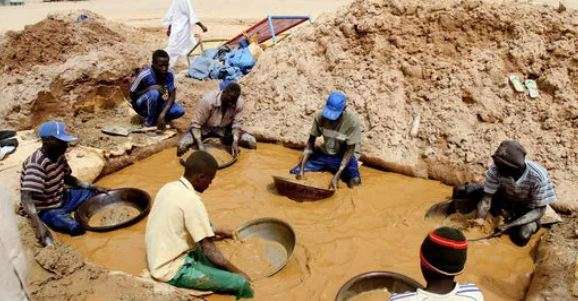Diamonds and gold are the focus of particular attention in Guinea as the country prepares to lift the suspension of artisanal mining. This decision marks a crucial turning point for Guinea's mining industry, opening up new opportunities for artisanal miners and the local economy.
Regulation of diamond and gold mining in Guinea
On October 14, 2024, an important step was taken in the regulation of the artisanal mining sector in Guinea. The ministers in charge of Mines, the Environment and Territorial Administration have signed four decrees aimed at regulating the artisanal exploitation of these two precious stones. This initiative will help transform the country's mining landscape.
Local economic benefits and job creation
The resumption of artisanal diamond and gold mining in Guinea is expected to generate rapid economic benefits for mining communities. Craftsmen will be able to work again, thus contributing to the reduction of unemployment and the increase in local incomes. Artisanal diamond and gold mining provides immediate employment opportunities for many Guineans. This activity allows thousands of families to meet their basic needs and improve their standard of living.
Environmental supervision and rehabilitation of mining sites
The new decrees focus on environmental protection in the context of artisanal mining. Strict measures are put in place to minimize the ecological impact and promote sustainable mining practices. An important part of the new regulations concerns the rehabilitation of mining sites. Artisanal miners will be required to restore the exploited areas, thus contributing to the preservation of the Guinean ecosystem.
Traceability and the fight against illicit trafficking
The controlled resumption of diamond and gold mining in Guinea is accompanied by measures to improve the traceability of minerals. These provisions are intended to effectively combat illicit trafficking and ensure that mineral wealth truly benefits the national economy. the supervised resumption of artisanal diamond and gold mining in Guinea represents a major opportunity for the country. It will make it possible to reconcile economic development, environmental protection and improvement of the living conditions of mining communities. This new era for Guinea's artisanal mining sector looks promising, both for artisans and for the national economy as a whole Guinea has significant diamond reserves, with 30 to 40 million carats confirmed and 500 million carats estimated. It is an active member of the Kimberley Process, an international initiative to certify rough diamonds and ensure transparency in the sector. The main diamond deposits are in Upper Guinea, particularly in the Banankoro-Sefadou-Sibiribaro region, and in Forest Guinea, near Macenta, along the Baoulé, Milo and Diani rivers. Other reserves have also been discovered in the coastal region in the west of the country. Gold is mined in the northeastern regions of Guinea, with areas particularly suitable for mining such as Siguiri, Dinguiraye, Kouroussa and Mandiana. Several large companies exploit Guinean gold industrially. Société Aurifère de Guinée (SAG), a subsidiary of AngloGold Ashanti, produces 350,000 ounces per year, while Société Minière de Dinguiraye (SMD) produces 300,000 ounces. As for Wega Mining, a subsidiary of Avocet Mining, it has held an operating permit since 2015 and is currently in the advanced phase of raising financing.

